You might have the best new product idea in the world, but until you find customers, it’s not actually a business. It’s important to find customers and conduct customer development interviews so that you can be sure you’re building something that people actually want and avoid spending time and money on something that people don’t want. Listening to your customers can also help you improve your offering from something that people “kinda like” to something they “love.”
Access to customers and ability to obtain interviews can be your first test of the viability of a business. If you can’t find customers before you have a product, what will you do when you have a product? Before you go out and start interviewing people, figure out who exactly you need to be interviewing. If you’re testing an idea, think about who you suspect is most strongly affected by the problem you’re solving or who would most passionately love your proposed product.
To find customers within your target segment, go where they hang out both online and offline. Think strategically about what activities your customers are likely to be partaking in, what groups and communities they’re likely to be a part of, and what social networks they’re likely to be active on.
Most of the channels below are not scalable or sustainable customer acquisition channels. However, scalability does not have to be your main concern at an early stage. Testing assumptions quickly, even if it costs a small amount of money, can save a lot of time and even more money in the future.
1. LinkedIn groups
If you suspect your ideal customers will have certain roles, be in certain industries, etc., try using LinkedIn groups to find potential customers. There are many groups for people who have specific roles, such as marketing, doctors, etc., and for many business related topics. Once you find someone you would like to interview, you can reach out through LinkedIn, ask a shared connection for an introduction, or find their contact information and reach out directly. If your customers are sales teams, you might check out this sales group which has nearly 150,000 members.
2. People you know
If you know people that fit into your customer segment, ask if they’re available for an interview. Be sure you’re talking to people who wouldn’t buy something from you just because they like you. Try to focus on gaining insight rather than pitching your idea, because your friends will be even more likely to agree with you. Here’s an example of a script I’ve used to ask people I know for interviews:
“Hi [their name],
Hope all is well! I’m looking for feedback on a potential product to help with [problem or process]. Given your experience, it would be great to get your feedback.
I don’t have a product to sell (yet)…I’m just trying to determine if it’s a problem worth solving in the first place.
Could I buy you a coffee next week to ask you a few questions and get your feedback?
Thanks,
[your name]”
3. Ask for referrals
Ask people you know if they know anyone that fits your customer profile. If they do, ask for introductions. Ask the people you get introduced to for more referrals. If someone is enthusiastic enough about your proposed product that they want to introduce you to their friends, that’s a good sign. Here’s a script you can use at the end of an interview to ask for referrals:
“Do you know anyone else who might have this problem that you would feel comfortable introducing me to so I could conduct a similar interview?”
You could also think of specific people you think could be customers, find them on Facebook or LinkedIn, and if you have any shared connections, ask the shared connection if they could introduce you.
4. Cold call or email
Get specific about who would love your product to the point of naming specific people. If your customers are businesses, find the contact information of a decision maker and reach out to them cold. The response rate to cold outreach is likely to be well below 100%, but if you phrase it correctly, you should get some responses. Here’s an example of an email template I’ve used:
“Hi [their name],
I’m Mike [link to page with my bio]. I’m looking for feedback on a potential product to help with [problem or process]. I came across your LinkedIn profile and it looks like you have a lot of experience with [problem or process], so I was hoping to get your feedback.
I don’t have a product to sell (yet)…I’m just trying to determine if it’s a problem worth solving in the first place.
Could I ask you a few questions and get your feedback over a fifteen minute phone call?
Thanks,
[your name]”
They key components of the email are that it 1) explains I don’t have a product to sell 2) asks for feedback, to position them more like a potential partner than a potential customer, 3) lets them know it won’t take up much of their time, and 4) very briefly describes the problem or area I’m trying to help with to pique their interest enough to respond.
5. Meetup.com
Meetup.com is a site where people join groups around their interest and organize offline events. It’s become quite popular so there’s a good chance there’s a group for the customers you’re looking for. If you’re targeting mothers, look for a meetup group for mothers.
Once you find a relevant group, you could attend their next event, where you’ll find a group of potential customers you can interview in person. You could also reach out to the organizers or specific people within the group through Meetup’s messaging system.
6. Conferences and events
Conferences can be a great way to find customers to interview if you’re working on an enterprise product. If your customers are publishing companies, go to a publishing conference. If your customers are young party-goers, go to a bar crawl. Eventbrite is a great place to find conferences and events.
7. Craigslist
Craigslist has many different categories of listings and gets a lot of traffic. Try reaching out to posters on categories related to your product. You can create your own listing to generate inbound. For example, if your customers are real estate brokers, search for apartment listing with brokers.
8. Twitter
Search for relevant hashtags and phrases on Twitter. For example, if your customers are babysitters, search for people talking about babysitting. Once you find them, you could Tweet asking for feedback or direct message them after following them.
9. Facebook
Facebook has several functions that can help you find potential customers. Using Facebook search, you can find people based on a wide range of different criteria, including interests, as shown below.
Facebook has groups for many different topics. If your customers are authors or content creators, you might check out a Kindle self-publishing group. You could then join the group create a post asking for interviews.
Running a small Facebook ad campaign to drive traffic to a landing page, can be a great way to find target demographics as well. Include a small amount of copy on the landing page briefly describing your value proposition or the problem you’re solving and include an email submission form.
10. Create a blog
Creating content that’s valuable to your customers can lead to inbound traffic. While it may take a long time to build substantial traffic, if it’s a customer segment you’re passionate about serving, creating content shouldn’t be a huge chore. Be sure to enable commenting to encourage discussion and interaction, and to have an email address submission form. Blogging can also become a great customer acquisition channel and is for many companies.
11. Offline paper handouts in public places
Go where your customers spend time offline and attract their attention with flyers and business cards. For example, if your product is fitness related, try posting on a board at a gym. Include your email address or a link to your landing page.
12. Kickstarter
Kickstarter is a great way to get validation for your product. It enables you to pre-sell your product to their audience of existing users. I recommend doing some research to determine if Kickstarter would be right for your product.
13. Hit the streets
If your customers are families, go to a family-centric neighborhood such as a suburb. Stop relevant people on the street and politely ask them if you could ask a few questions related to the problem you’re solving. Most people will be happy to help. If you’re customers are restaurants, think of one in your neighborhood that you can walk in to and ask for an interview.
14. Quora
Quora can be a great resource for gaining customer insights. There’s nothing as valuable as in-person, one-on-one, customer development interviews, however Quora can be a great supplement. Look for questions and review pages relevant to your customers or the problem you’re solving. If your customers are human resources people or people you are hiring, you might want to read a thread similar to the one pictured below.
You could reach out to the people that are answering, voting on, or following the questions to ask for feedback, especially if they describe having the pain you’re solving for. You can use a script similar to the one described in the cold outreach section.
To learn more, check out “Customer Development for Entrepreneurs”: the book, and the video course.


